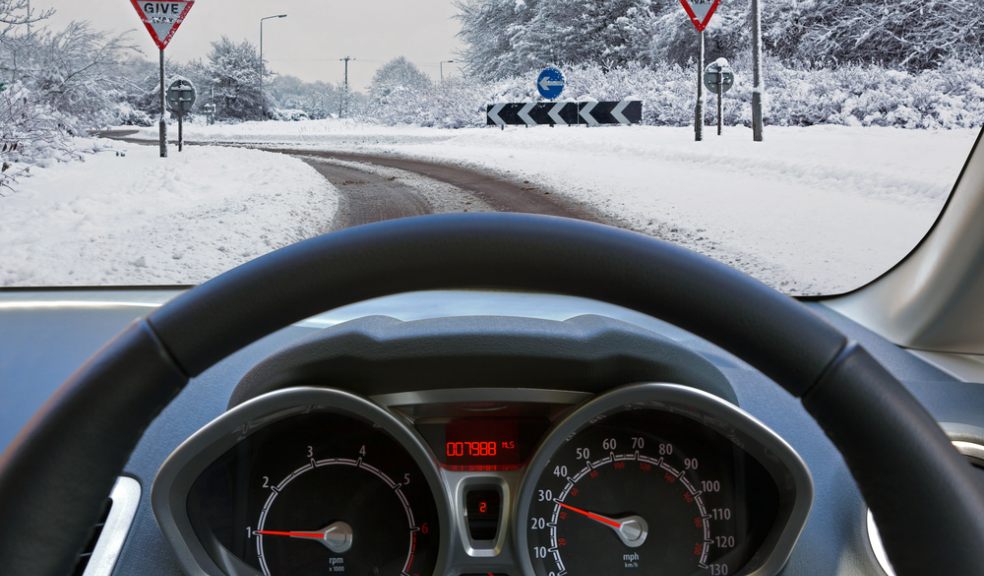
Drivers urged to prepare for winter
With the arrival of colder weather, the Highways Agency is urging drivers to ensure they are prepared for driving in winter weather.
Agency regional manager, Julian Strong, said: “The Highways Agency and its contractors are well-prepared for winter across the South West.
“We use detailed weather forecasts and treat the road network before road temperatures fall below freezing, often at night in preparation for peak traffic periods. But that doesn’t mean people should drive as they normally would - in severe weather drivers need to take care and plan ahead.
“We will do all we can to keep the roads open during severe weather but if drivers can carry out a few simple vehicle checks, pack a few important winter items in their vehicles and plan journeys, we can work together to keep the region’s roads moving.”
This year the Highways Agency and its contractors will have 20 vehicles on standby to salt the A30 and A38 west of Exeter, eight heavy tractors to help with snow ploughing and removing stranded vehicles and more than 10,600 tonnes of salt at five depots across the region (Sowton in Exeter; Scorrier near Redruth; Pridhamsleigh near Buckfastleigh; Tolpetherwin near Launceston and Doublebois near Liskeard.)
The Agency encourages drivers to take some simple steps during winter:
- Check your vehicle – fuel and fluid levels, electrics and tyres – before setting out.
- Be prepared with an emergency kit in your vehicle, including ice-scraper, de-icer, warm clothes and blankets, torch, boots, first aid kit, jump leads, a spade, a road atlas and sunglasses (for the winter glare).
- Plan your journeys. Check weather and travel conditions before and during your journey.
- If the weather is very severe, consider whether your journey is essential or travel at a different time. In winter, the weather can change quickly so always be prepared for bad weather
- Remember that even when roads have been treated with salt, ice can still form, particularly on bends or under overhanging trees.
This year the Highways Agency and its contractors will have 20 vehicles on standby to salt the A30 and A38 west of Exeter and more than 10,600 tonnes of salt at five depots across the region (Sowton in Exeter; Scorrier near Redruth; Pridhamsleigh near Buckfastleigh; Tolpetherwin near Launceston and Doublebois near Liskeard).
The Highways Agency provides real-time traffic information for the motorways and other strategic roads in England using a range of channels, including the web, social media and through national, regional and local media.
Nationally the Highways Agency has a winter fleet of over 500 winter vehicles working around the clock from 100 depots located across England, allowing quick access all parts of the strategic road network.
How salt works:
Roads are treated with salt to prevent ice forming. Salt also makes it easier to plough snow off the roads.
Here’s the science behind salt spreading operations:
- Road surface temperatures are monitored around the clock. Before a freeze, we mobilise our salt spreaders onto the road network.
- At least 8g of salt is spread onto every square metre of road. Salt is hydroscopic, meaning it draws moisture from the road surface (moisture which may otherwise freeze into ice).
- Vehicles on the road crush the salt to form a brine solution. Brine lowers the freezing point of moisture on the road surface, to reduce the risk of ice or frost forming. The lower the road temperature, the more salt we have to use to be effective.
Spreading Salt:
- At least 8g of salt onto every square metre of road surface - just over a teaspoon.
- There’s four-times that amount of sugar (35g) in just one 330ml can of popular cola.
Ploughing:
- Before it starts snowing, the road is treated with salt.
- Salt won’t stop the snow, but it makes it easier to plough it off the road.
- All Highways Agency winter vehicles can be fitted with snow plough blades to clear snow from the road surface.
- Once the road is cleared of snow, more salt is added to prevent re-freezing.



















